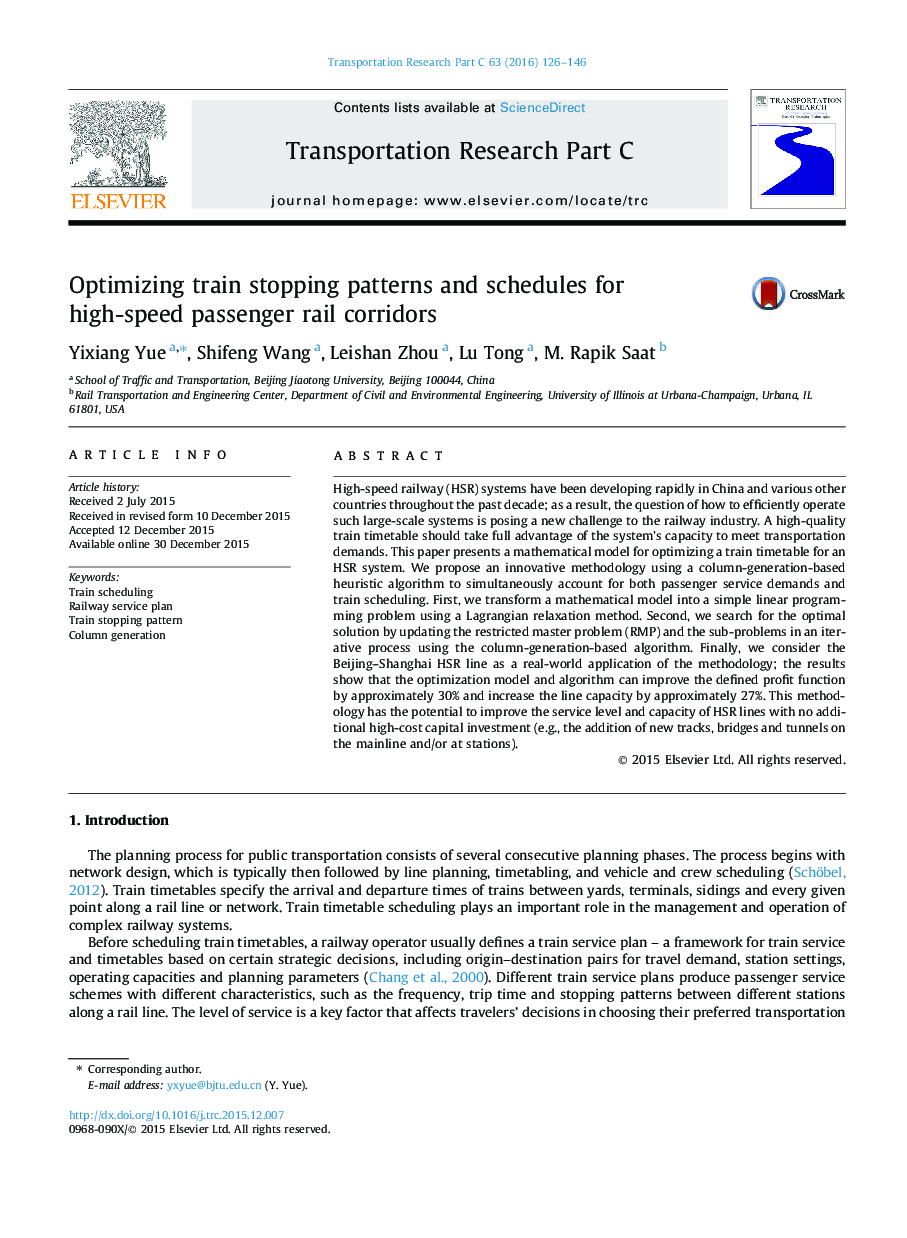| Article ID | Journal | Published Year | Pages | File Type |
|---|---|---|---|---|
| 526315 | Transportation Research Part C: Emerging Technologies | 2016 | 21 Pages |
•We introduce a new railway timetable optimization model to simultaneously consider the stopping patterns and train schedule.•We propose the use of an innovative column-generation-based heuristic to solve a very-large train timetable problem.•We illustrate the use of the model and algorithm to improve the timetable of a real-world HSR system.
High-speed railway (HSR) systems have been developing rapidly in China and various other countries throughout the past decade; as a result, the question of how to efficiently operate such large-scale systems is posing a new challenge to the railway industry. A high-quality train timetable should take full advantage of the system’s capacity to meet transportation demands. This paper presents a mathematical model for optimizing a train timetable for an HSR system. We propose an innovative methodology using a column-generation-based heuristic algorithm to simultaneously account for both passenger service demands and train scheduling. First, we transform a mathematical model into a simple linear programming problem using a Lagrangian relaxation method. Second, we search for the optimal solution by updating the restricted master problem (RMP) and the sub-problems in an iterative process using the column-generation-based algorithm. Finally, we consider the Beijing–Shanghai HSR line as a real-world application of the methodology; the results show that the optimization model and algorithm can improve the defined profit function by approximately 30% and increase the line capacity by approximately 27%. This methodology has the potential to improve the service level and capacity of HSR lines with no additional high-cost capital investment (e.g., the addition of new tracks, bridges and tunnels on the mainline and/or at stations).
